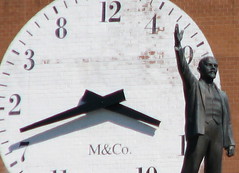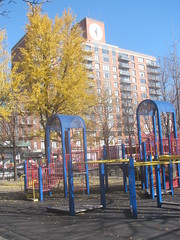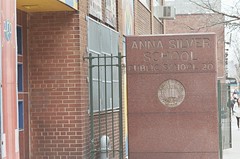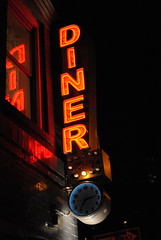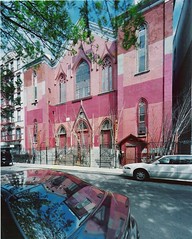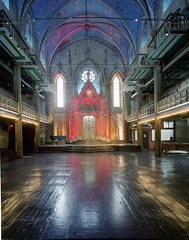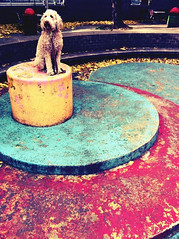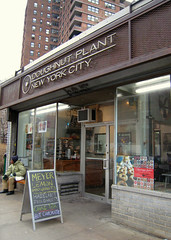West:
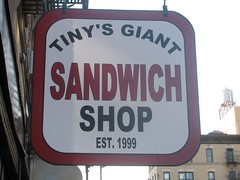
Corner (129 Rivington): Tiny's Giant Sandwich Shop moved here from around the corner. Was Lower East Side Locksmith.
115: This glassy condo, completed 2010, has been nicknamed Son of THOR due to sharing an architectural team, Grzywinski+Pons, with The Hotel On Rivington.
111: The Community Technology Center, which provides
Internet access and computer education, is run by Asian Americans for Equality, a community group formed in the
mid-1970s.
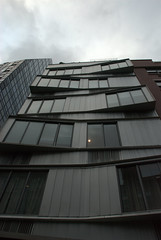
109: The
Switch Building, a six-story condo
building whose facade juts out 18 inches on one side--switching from the left side to the right side with each floor. Built
in 2006-07 to a design by nArchitects.
107: Was Kedem Wines, a business founded in
the early 1800s in the Austro-Hungarian Empire that
provided wine to Emperor Franz Josef. The founder's
great-great-great-grandson, Eugene Herzog, fled the Communist regime in
Czechoslovakia in 1948, resettling here under a Hebrew name that
means "in the beginning" or "as before." After Herzog's
death in 1995, the space was transformed into a winery-themed jazz and experimental club called Tonic, with a
kletzmer brunch and a literary bookstore annex called
Incommunicado. Rising rents in 2007 forced the club's
relocation to
Third Avenue and 29th Street, where it's a
much less interesting busines.
Blue
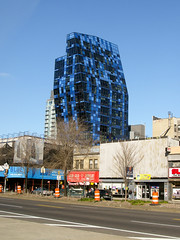
103-105: One of the most distinctive and
controversial buildings on the Lower East Side, this
assymetrical 16-story condo clad in multiple shades
of blue glass, completed in 2007, was designed by Bernard Tschumi, former dean of Columbia's architecture school.
It's a fine building, but not appropriate for one of
America's most historic neighborhoods—any more than it
would be appropriate for Williamsburg, Virginia.
Corner (128 Delancey): Gem Supervalue Stores
| 